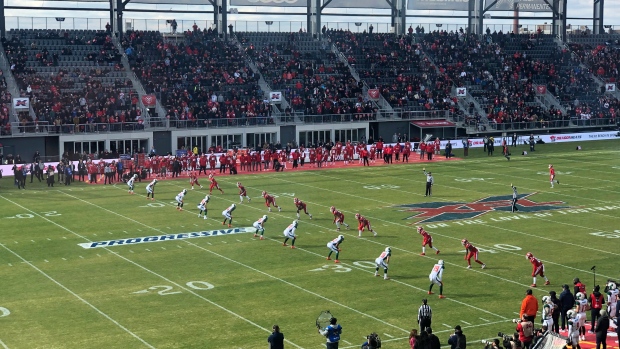Apr 13, 2020
XFL2, we hardly knew you
By staying the course, the CFL has returned to its place as the undisputed best alternative to the NFL for professional players and coaches, Dave Naylor writes.
By Dave Naylor

So, another professional winter/spring football league disappears into the night.
XFL2, we hardly knew you, much like the Alliance of American Football a year ago.
The XFL leaves in its wake a debate over whether this incarnation might have succeeded had its charter season not been shut down after just five weeks by COVID-19. But given the history of failed efforts to create a sustainable business model for alternative professional football in America, most will assume this one would have ended up on the scrap heap, sooner or later.
Like the first version of the XFL, its more mature sibling delivered some worthy innovations – both in terms of its broadcasts and its rules in an attempt to fill the seven-month void between Super Bowl Sunday and the NFL’s kickoff in early September.
There are those who believe the XFL's kickoff, where the coverage team remained still at the return side 35-yard line and the return team was anchored to the 30-yard line until the ball was received, may become standard in the game – perhaps starting at the grassroots level, where safety is an even greater concern than in the pros.
And the manner in which the XFL tried to embrace gambling may be a glimpse into the future of all professional sports.
But the XFL also suffered from some of the same fatal flaws that plagued other start-up leagues, including a lack of recognizable names and television audiences that declined week after week.
Presumably, those ratings weren’t going to be any better going up against March Madness and Major League Baseball, neither of which were underway when the pandemic shut the sports world down.
Though it's hard to see how a league where interest declines as the season rolls on was ever going to be sustainable, there is every reason to believe that World Wrestling Entertainment chairman Vince McMahon was prepared to see the league into at least the 2021 season.
It's undoubtedly true that the XFL’s demise is good news for the Canadian Football League, whose teams were shaking in their boots 18 months ago about the imminent arrival of both the AAF and the XFL.
Back then, it was impossible to have a conversation with a CFL general manager that didn't involve hearing how difficult it had become to recruit American players and how worried they were about the CFL becoming a third-tier league.
At least partly in response to the competition, the CFL changed its rules to allow players to sign NFL contracts after any off-season (although that's still being ironed-out administratively) and boosted its minimum salary by roughly 20 per cent.
By last fall, although many players were choosing the XFL over the CFL, the sense of worry among CFL teams was far less than what it had been before the collapse of the AAF. The attitude had changed from “This is really going to hurt us,” to “We'll worry when one of these leagues proves it can sustain itself and give us a real reason to worry.” And rightly so.
By staying the course, the CFL has returned to its place as the absolute best alternative to the National Football League for professional players and coaches.
That’s an important place to be as the CFL prepares itself to weather the coming uncertainty.
It’s also where the CFL is likely to remain for a while, since it may be a long time before someone pumps their money into another alternative professional football league.

